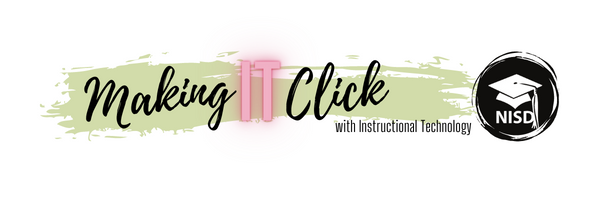Vanderbilt University professor H. Richard
Milner IV wrote that, “…building
relationships with students is about meeting students where they are,
attempting to understand them, and developing connections with them.”
Most educators know that connecting with students and building positive
relationships are key strategies to developing student success and those relationships
serve as a foundation for what is done each and every day in the classroom. Making
those connections can sometimes be a challenge, especially when a student is more
introverted or maybe lacks confidence in his or her own voice. These
connections also rarely happen without a teacher’s willingness to be vulnerable
and share authentic pieces of themselves with students which, in turn, help to build
foundations of openness and trust that are essential in student motivation and growth.
 |
| Maslow's Hierarchy of Needs |
Technology can be useful in
transforming the ways we go about meeting the needs of our students while also providing a voice for those students
who feel uncomfortable or who might not normally contribute in larger class
settings. Effectively utilizing the right tool or resource can make
a real difference in providing authentic, safe, and supportive connections, and ultimately learning
experiences, that yield success for all
students.
Katy Watson, a French teacher at V.R. Eaton
High School explained that, “French I is the first time many students encounter a foreign
language class in their entire academic career” and “it’s often a period of
adjustment.” Mademoiselle Watson’s awareness of her students’ need for
connecting and establishing a comfortable foundation for learning led her to
utilize her YouTube channel to produce a video welcoming her students to the
course and sharing basic expectations with both students and parents, prior to
the first day of school. Mademoiselle Watson took time to introduce herself to
students and their families while showing them her passion for both education
and the French language. When asked about her goal for this video, she said, “I
wanted to take some time to introduce parents and students to my program and to
[help them] get an idea of what they can expect from my class. I’m hoping that
parents will feel more empowered to speak to their students about my class…”
and “to reach out to me if they need something, because they’ve put a face with
a name and they feel more comfortable.” Her willingness to take that extra step
to initiate personal contact with students and parents before anyone even set
foot into the classroom is something that has had an impact on both students
and families. Students came to class on the first day and felt encouraged to
mention the video and make connections right away. Several students mentioned
appreciating the effort and having a greater feeling of comfort and openness at
the beginning of the course. Parents expressed a sincere appreciation for a
chance to hear about the course and the instructor’s expectations and to have a
positive communication from the teacher right at the start of the year.
Samuel Beck Elementary’s Ethan Dee is
another example of an NISD educator who regularly uses technology in his
classroom and, this year, he specifically used it to create authentic
connections right at the start. Mr. Dee began by assigning a “Welcome Back
Scavenger Hunt” where students were to visit a variety of websites gathering
information about Mr. Dee and sharing information about themselves with him and
the rest of the class. Mr. Dee utilized everything from a Smore newsletter, to Moodle, to Padlet, to the comments section of his school
website, and even Animoto, where he created a
video about himself.
This scavenger hunt not only gave students a chance to get to know their
teacher, but it also allowed them to begin interacting with each other in a
positive way and previewing the types of tools they would use to learn and
collaborate throughout the year. When speaking about the scavenger hunt assignment, Diane Tsapos, a fifth grade parent said, "...as a parent, I enjoyed sharing this." Aaron Reisman, one of Mr. Dee’s fifth grade students,
shared that he is usually a bit quiet and nervous at the start of school and
that he has felt more comfortable this year. He especially liked to see his
classmate’s selfies posted on the scavenger hunt Padlet wall and thought that
the part of Mr. Dee’s video, where he was dancing, was funny. Aaron expressed
that he was definitely looking forward to spending the year in Mr. Dee’s class
because he was already having fun exploring these tools and getting to know everyone better.
When we evaluate student academic
experiences, we find out very quickly that although a lot of content is
sometimes forgotten, the connections we make help us to solidify foundations
of trust, social responsibility, and confidence, which then allows students
to walk away with skills and experiences that are positively remembered and applied for
the rest of their lives.
Student ISTE Standards:
1) Creativity and Innovation: Students demonstrate creative thinking, construct knowledge, and develop innovative products and processes using technology.
- 1.1: Apply existing knowledge to generate new ideas, products, or processes
- 1.2: Create original works as a means of personal or group expression
- 2.1: Interact, collaborate, and publish with peers, experts, or others employing a variety of digital environments and media



No comments:
Post a Comment
Note: Only a member of this blog may post a comment.